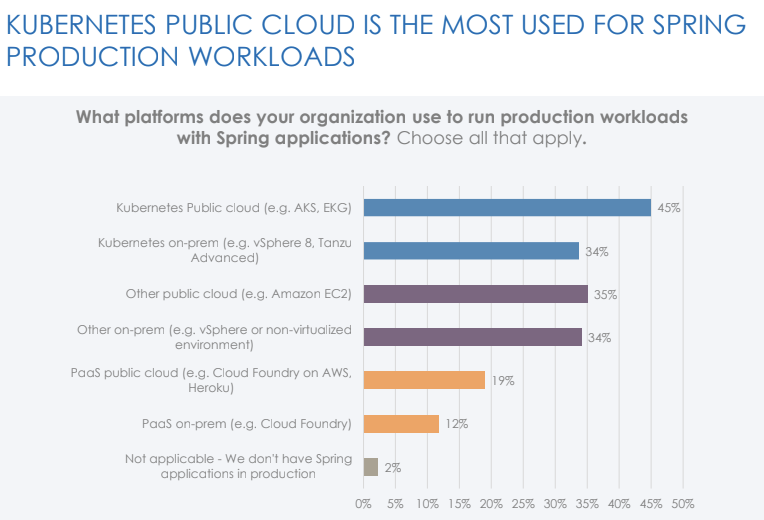VMware releases a 2022 guide to Spring developers annual survey,Covers 1421 active Spring professionals.The adoption of modern architectures such as microservices, reactive, and serverless is explored; including an examination of modular monoliths and what new technologies are evolving in this space. It also surveys how the Spring community handles software upgrades, learns about common pain points, and identifies key avenues for learning about Spring features and Spring-related technologies.
According to the report,API is the main use case. Many architects and developers consider APIs a core part of their architectures, as does the Spring community. Since 2020, the community has chosen exposing APIs (both internal and external) as the most popular use of Spring. With the growth of modern and cloud-native applications, the use of Spring for API development continues to increase.

SOAP Web Services accounted for 30 percent of APIs implemented by Spring, up from 28 percent the previous year. XML-based SOAP web services have long been replaced for most developers by REST APIs and JSON and JSON-based OpenAPI (formerly known as Swagger); but while plain JSON (81%) and OpenAPI (61%) are far ahead, The 30% ratio shows that SOAP still has high stickiness.
Spring developers are enthusiastic about both Project Loom (lightweight threads for Java) and Spring Native. Project Loom, currently in preview, brings virtual threads to Java and can also reduce the memory footprint of applications. Of those who had heard of Project Loom, almost all (90%) had a positive view of the technology, and 30% planned to use it, the report said. However, the report added that “Loom is nearing the peak of its hype cycle.”
43% of respondents have tried Spring Native and 79% intend to deploy Spring Native applications within 2 years; key motivations are savings on hosting costs and native compilation with containers and Kubernetes in a smaller footprint.
The Spring team spends a lot of time making sure Spring works well on Kubernetes.Since the survey began in 2020, Kubernetes has become the main platform for running Spring applications.

Among the challenges faced, the most reported was a “steep learning curve”, which rose to 26% this year. Additionally, Spring developers struggle with issues such as “difficulty understanding what all the components do” and “lack of information on how to use modules together”.
More details can be found in the full report.
#Spring #Survey #Optimistic #Project #Loom #Spring #Native
